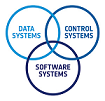Speaker
Description
In our latest ESA activity, a flight test campaign was carried out in a representative environment of a Mars Landing for the verification of the Hybrid Camera-Lidar Hazard Detection and Avoidance System (H2DAS). For that purpose, a large multicopter platform was developed to carry aloft the Avionics Test Bench (ATB) experiment.
The multicopter-based flight test platform (FTP) can execute 15min autonomous flights while carrying an avionics payload of 12kg. The FTP functions independently from the ATB, with its own instrumentation suite that enables autonomous flights and provides a source of accurate navigation data for using as a reference when analysing and discussing the results of the avionics experiment.
The ATB integrates a Mars landing-representative sensor suite: an IMU, a laser altimeter, a visual camera and a LiDAR. The sensors are connected to both a space-representative processing unit (a soft-core LEON2 and an RTAX-2000 FPGA, for the H2DAS software) and a COTS-based Zynq-7020 board with dual-core ARM A9 CPUs and an FPGA (to accelerate the most computationally intensive tasks of Vision-Based Navigation).
The hardware-accelerated real-time software implementations of the Visual Based Navigation and Hazard Detection and Avoidance (VN&HDA) were first tested and verified in a processor-in-the-loop (PiL) facility.
Both the flight test platform and VN&HDA package were tested on the ground, and then validated individually in flight. Finally, the activity proceeded to carry out an extensive flight test campaign in one of the largest purpose-built Mars analogue terrains in Europe (>15000m2) at a quarry in Portugal.
Flight tests were also in a sufficiently high number (>650 tests) as to demonstrate a statistically significant result, indicating a safe site selection probability of >99%.

